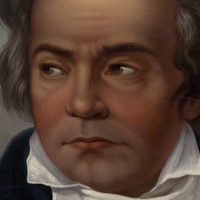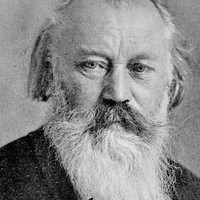Brahms and Beethoven Sextets



Until the age of 21, Ludwig van Beethoven lived in his hometown of Bonn, Germany. He had the makings of a child prodigy — at 11, his piano and composition teacher predicted in a magazine article that the boy would be a “second Wolfgang Amadeus Mozart” — but that sort of high-profile touring career never materialized. Instead, Beethoven entered his twenties as a viola player in Bonn’s court orchestra.
In 1792, a patron paid for Beethoven to travel to Vienna for composition lessons with Franz Joseph Haydn. It was meant to be a short stay, but Beethoven abandoned his plan to return home once he saw that he could follow in the footsteps of his hero Mozart (who had died less than a year earlier) and make a living as a freelancer. Besides performing as a pianist, Beethoven taught lessons, cultivated private patrons, and wrote accessible music for the publishing market, all setting the stage for a composing career that flourished in the next decade.
Beethoven probably wrote this Sextet for two horns and string quartet in 1794 or 1795, although nothing definitive is known about its origins until it was published in 1810 (which accounts for its deceivingly high opus number). Most likely he wrote it for some occasion in Bonn, where he knew the Elector’s orchestra well from his days in the viola section. The publisher who eventually printed the score, Nikolaus Simrock, was also a horn player in that orchestra and a longtime friend.
In writing for the more conservative audience of provincial Bonn, Beethoven grounded his score in popular practices from past decades. Composers from the first half of the eighteenth century delighted in writing concertos for two horns with strings, including examples from Handel and Vivaldi, and Beethoven’s Sextet really functions the same way, with the horns acting more like soloists than co-equal members of a chamber music ensemble. In the more recent past, Mozart had scored a number of Divertimentos for two horns and strings, showing how such an ensemble was ideal for producing light-hearted entertainment, especially outdoors. Within this easygoing setup, Beethoven wrote vibrant and virtuosic music that made the most of the horns and their association with the countryside, including hunt-inspired calls in the finale.
Aaron Grad ©2021

Disassemblage means the action or process of taking something apart. In this piece, the thing being taken apart is the opening theme. On a more poetic and personal level, the piece is a reflection on 2020's disruption of expected trajectories in life and work. Disassemblage begins with driving, insistent, directional phrases. These lines are goal-oriented and unrelenting. The opening section can be heard as a musical depiction of the propulsive, routine momentum of business, work, school and commuting. Layoffs, furloughs, remote work and school disrupted these routines and forced people to disassemble, and then reconsider and rebuild, sometimes while making drastic changes. Musically, the opening theme becomes frozen into incessant patterns, painfully interrupted, and gradually replaced with something completely different; something calmer. It is not a seamless transformation, but a simulation of the uncertainty and trial and error we continue to face in finding our footing in 2021.
Sky Macklay ©2021

(Duration: 39 min)
The first work of chamber music that Johannes Brahms issued publicly was his Piano Trio No. 1, composed in 1853 after his pivotal introduction to Robert and Clara Schumann. The following year, after Robert’s leap into the Rhine River and confinement in an insane asylum, the 21-year-old Brahms moved to Düsseldorf to help manage the Schumann household and care for the children while Clara supported the family playing concert tours. In the two years that Brahms spent as the de facto head of the Schumann household, he developed a deep (and not entirely platonic) affection for Clara, 14 years his senior.
It took Brahms a few years to stabilize after he left the Schumann orbit, musically and personally, but he found his footing by concentrating on chamber music between 1860 and 1865, when he created a series of seven groundbreaking scores. The earliest of the series employed an uncommon ensemble, forming a sextet with pairs of violins, violas and cellos. There were very few examples of earlier string sextets (just a handful from the previous century by the cellist-composer Luigi Boccherini, and a more recent effort from Louis Spohr), but this lack of tradition probably appealed to Brahms, who shied away from legacy-laden genres like string quartets and symphonies until later in life. The Sextet in B-flat debuted in Hanover on October 20, 1860, and it clearly pleased the composer since he returned to the same format for a second sextet in 1865.
In the opening movement of the First String Sextet, the ensemble makes the most of the diverse textures that can be achieved with six instruments, culminating in an all-plucked coda. In the middle movements, Brahms updated two older traditions — first a theme and variations, and then a scherzo — demonstrating how well he had integrated the lessons of Joseph Haydn, Wolfgang Amadeus Mozart and Ludwig van Beethoven. The Rondo finale maintains that Classical connection, with light-hearted music in the spirit of a Serenade. The Sextet may have been a rarity when Brahms approached it, but his two contributions proved so influential that they birthed a new chamber music genre, with major additions following from Antonín Dvořák, Pyotr Tchaikovsky and Arnold Schoenberg in the decades to come.
Aaron Grad ©2021
Get driving directions and find nearby parking.
Find dining options close to the venue.
View seating charts to find out where you'll be seating.
SPCO concerts are made possible by audience contributions.
For exclusive discounts, behind-the-scenes info, and more:
Sign up for our email club!
